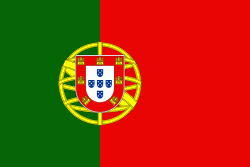Lagoa Municipality (Lagoa)
 |
 |
According to some historical sources, the earliest settlement in the area occurred along the edges of small lakes or marshes (lagoa), which were drained in order to create a fertile land. There are many pre-historic vestiges of the early settlements, including menhirs (standing stones), funerary necropoles and artifacts that date a human presence to remote history. After the Celtiberian era, including the age of Cynete presence and domination, followed by the arrival of the Roman Empire and then the Visigoths, the entire region of the Algarve was conquered and ruled by Arabs when they moved into the Iberian peninsula in the 8th century.
When the area was later reconquered in the mid-12th century by Christian forces from the north, it was integrated into the fledgling Kingdom of Portugal. Muslim influence in Lagoa was profound, from the rich patrimony left behind, not only in neighboring Silves (then taifa capital), but also in Lagoa where commerce thrived.
During the 14th century, a favorable confluence of conditions allowed Lagoa to develop rapidly. Yet, the events of the 1755 Lisbon earthquake left little marks from this period: the reconstruction wiped away many of its classic architecture (there are a rare few of this period, including the churches of Estômbar and Porches). The coastal zone was, for centuries, attacked by barbary pirates and corsairs, and those responsible for public security erected various defensive structures along the coast, such as the fortresses of Nossa Senhora da Rocha, Carvoeiro and São João de Ferragudo, in addition to the lookouts and redoubts, such as the tower of Lapa or Marinha.
For a long period, Lagoa was governed within the municipality of Silves. On the 16 January 1773, a foral (charter) was issued by King Joseph I, incorporating the municipality of Lagoa, after its principal settlement (Lagoa) was elevated to the status of town (vila).
The local natural resources contributed to the current economic structure of the municipality, with agriculture (especially fruit and wine production), fishing, light industry and, later, tourism influencing the activities of the region. The fishing industry (in the communities of Ferragudo, Benagil, Carvoeiro and Senhora da Rocha), vineyards, and the traditional products of irrigated agriculture were the principal sources of wealth for the area until the 1970s. Driven by the abundance of fish, the canning and conserve industry at the beginning of the 20th century was responsible for an economic boom, that brought a general prosperity and wealth to the region. From the 1960s, however, tourism increasingly became the main driver of the area's economic development and creation of brand new infrastructure. This has brought an increase in job creation, its growth rapidly became the economic engine of the municipality, and it has now assumed a prominent place in the local economy. In parallel to the growth of tourism, the growth of all the related activities, especially in the construction industry, services, and commerce in general, resulted in the elevation of Lagoa to the status of city (cidade).
Map - Lagoa Municipality (Lagoa)
Map
Country - Portugal
 |
 |
| Flag of Portugal | |
One of the oldest countries in Europe, its territory has been continuously settled, invaded and fought over since prehistoric times. The territory was first inhabited by pre-Roman and Celtic peoples who had contact with Phoenicians, ancient Greeks and Carthaginians. It was later ruled by the Romans, followed by the invasions of Germanic peoples and the Islamic invasion by the Moors, whose rule was eventually expelled during the Reconquista. Founded first as a county of the Kingdom of León in 868, gained its independence as the Kingdom of Portugal with the Treaty of Zamora in 1143.
Currency / Language
| ISO | Currency | Symbol | Significant figures |
|---|---|---|---|
| EUR | Euro | € | 2 |
| ISO | Language |
|---|---|
| PT | Portuguese language |















